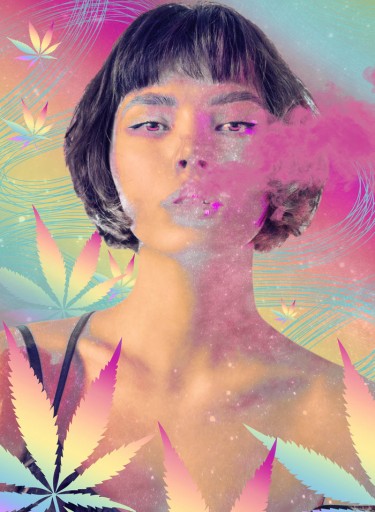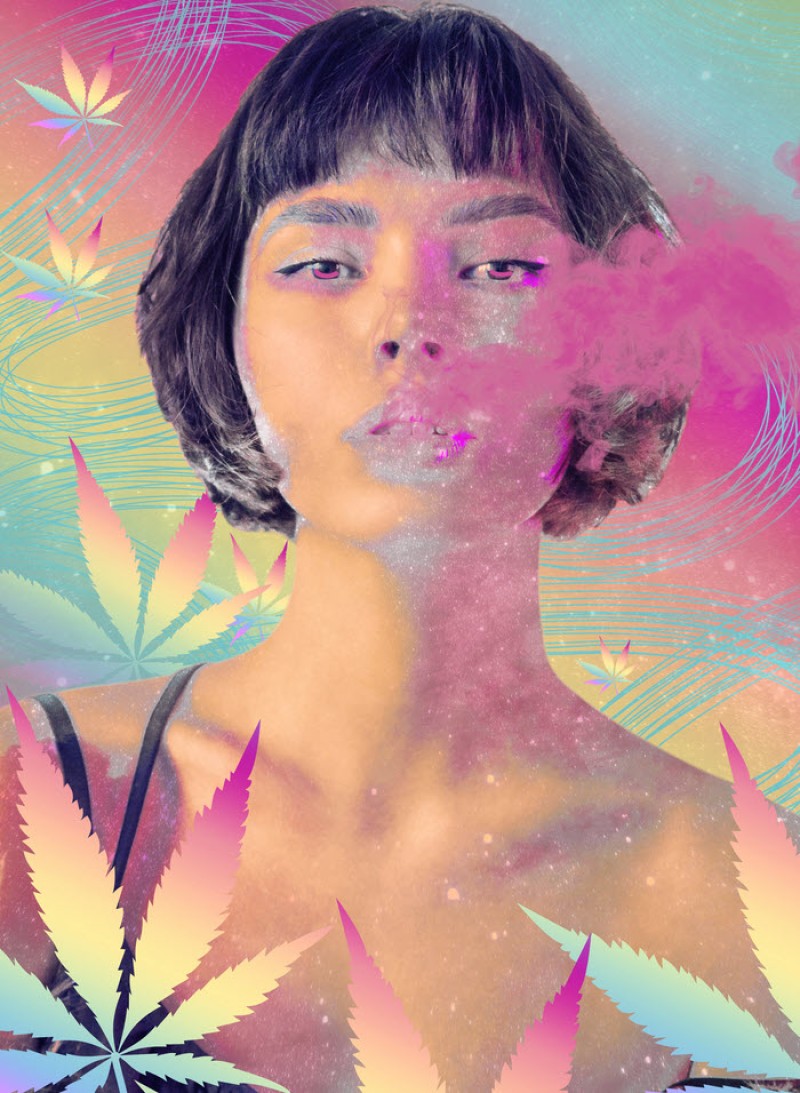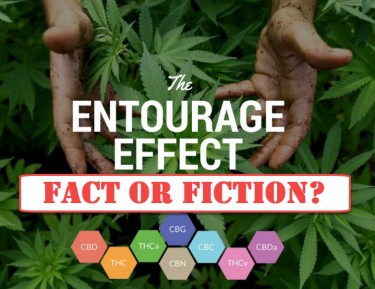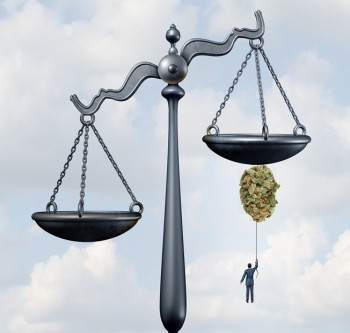
I'll never forget the first time a passionate budtender launched into an elaborate explanation of why I needed to purchase a "full-spectrum" cannabis product instead of an isolate. "The entourage effect," she proclaimed with evangelical certainty, "is what makes cannabis truly medicinal. THC alone is just getting high—you need all those terpenes working together for real healing."
Her conviction was impressive. Her scientific literacy? Less so.
The cannabis world is awash with claims about the "entourage effect"—the notion that the hundreds of compounds in the cannabis plant work synergistically, creating effects greater than any single component could achieve alone. This concept has become the cornerstone of modern cannabis marketing, distinguishing premium "full-spectrum" products from allegedly inferior isolates.
But as I've dug deeper into the actual science behind this popular theory, I've discovered a surprising truth: the entourage effect occupies a strange liminal space between established fact and marketing fiction. It's neither completely proven nor disproven—a hypothesis with compelling preliminary evidence but far less scientific certainty than industry marketing would have you believe.
"The entourage effect remains a hypothesis more often co-opted for marketing than grounded in evidence," notes cannabis researcher Dr. Jonathan Simone. "That doesn't mean it's wrong, but it does mean we should resist conflating convenient narratives with established science."
As cannabis legalization spreads and the industry matures, distinguishing scientific reality from clever marketing becomes increasingly important for consumers. Let's explore the origins of the entourage effect, examine the existing evidence, and separate fact from fiction in one of cannabis's most cited—and perhaps most misunderstood—concepts.
The Birth of a Theory: Where the Entourage Effect Actually Came From
The term "entourage effect" has become so ubiquitous in cannabis circles that many assume it's been part of the plant's lore for centuries. In reality, the concept is surprisingly young—and wasn't initially about cannabis at all.
The term was first coined in 1998 by Israeli researchers Raphael Mechoulam and Shimon Ben-Shabat in a study published in the European Journal of Pharmacology. Their groundbreaking paper, "An entourage effect: inactive endogenous fatty acid glycerol esters enhance 2-arachidonoyl-glycerol cannabinoid activity," examined something quite different from what most cannabis marketers describe today.
"The original study focused on endogenous cannabinoids—compounds produced naturally within the human body—not plant cannabinoids," explains Dr. Ethan Russo, a neurologist and pioneer in cannabis research. "Mechoulam and Ben-Shabat observed that certain inactive compounds in the body enhanced the activity of 2-AG, one of our main endocannabinoids."
This distinction is crucial. The original "entourage effect" described how inactive compounds in the human body could enhance the effects of naturally occurring human cannabinoids. It wasn't about how plant terpenes modify the effects of THC or CBD.
The leap from this initial research to today's cannabis-specific entourage claims represents a significant expansion of the original concept—one that happened with remarkably little direct scientific validation. While Mechoulam himself later suggested the concept might apply to plant cannabinoids as well, the direct evidence for cannabis-specific entourage effects remains surprisingly limited.
So how did a theory about human biochemistry transform into the primary marketing tool for premium cannabis products? The answer lies in our natural desire for simple explanations to complex experiences.
Anyone who has consumed different cannabis varieties knows they can produce markedly different effects, even when THC and CBD contents are similar. The entourage effect offered an elegant explanation: it's the supporting cast of minor cannabinoids and terpenes creating those unique experiences!
This explanation isn't necessarily wrong—it's just far less proven than marketing claims would suggest. As cannabis researcher Dr. Simone notes, "The entourage effect is a valid hypothesis and arguably the most promising in terms of explaining cannabis's varied and nuanced effects." But hypothesis and established fact are not the same thing.
The Evidence: What We Actually Know
The current evidence for cannabis-specific entourage effects falls into several categories, each with significant limitations:
1. Preclinical Laboratory Studies
Some laboratory research suggests potential interactions between cannabinoids and terpenes. For example, a 2019 study in the British Journal of Pharmacology found that when certain terpenes were added to THC, there were measurable changes in CB1 receptor binding and signaling. Similarly, beta-caryophyllene, a terpene found in cannabis and black pepper, has been shown to activate CB2 receptors.
However, these studies typically use isolated compounds at concentrations far higher than what's found in cannabis products. As Dr. Margaret Haney, Professor of Neurobiology at Columbia University, cautions: "Laboratory findings don't always translate to real-world effects. The concentrations used in these studies often exceed what's present in the plant or in consumer products."
2. Clinical Studies
A handful of small clinical studies have compared whole-plant extracts to isolated compounds. One of the most cited is a 2011 survey by Dr. Ethan Russo that found patients with refractory epilepsy responded better to CBD-rich cannabis extracts than to purified CBD. Similarly, a 2015 Israeli study showed that whole-plant extract required a lower dose than purified CBD to achieve similar effects.
But these studies have significant limitations. "Most clinical studies showing benefits of whole-plant extracts don't systematically vary the components to determine which specific interactions are important," explains Dr. Ziva Cooper, Director of the UCLA Cannabis Research Initiative. "They show that something in the extract beyond the main cannabinoid matters, but not what or how."
3. Observational Data
Perhaps the strongest evidence comes from the lived experiences of cannabis consumers who consistently report different effects from different strains, even when THC content is similar. This aligns with observational data from medical cannabis patients who often prefer whole-plant products to isolates.
As Dr. Russo notes, "The fact that patients almost universally report greater benefits from whole-plant preparations than from isolated compounds is meaningful data that shouldn't be dismissed." However, such reports are subject to expectation effects, placebo responses, and recall bias.
4. Historical Context
Traditional cannabis medicine across various cultures has typically used whole-plant preparations rather than isolated compounds. This historical preference for whole-plant medicine predates scientific understanding of cannabinoids and terpenes, suggesting people recognized differences in effects long before they could explain why.
However, traditional use doesn't constitute scientific proof. Many traditional medicines have failed to show efficacy when subjected to controlled trials.
What's missing from this evidence base are large-scale, well-controlled human studies directly comparing the effects of precisely formulated full-spectrum products versus isolated compounds. Without such studies, the entourage effect remains a compelling but unproven hypothesis.
The Marketing Machine: How "Might Be" Became "Definitely Is"
Despite the limited evidence, cannabis marketing has embraced the entourage effect with absolute certainty. Browse any dispensary website or product packaging, and you'll find confident assertions about terpene profiles producing specific effects—claims that far exceed the current science.
"The cannabis industry has adopted the entourage effect as gospel when the reality is much more nuanced," says Dr. Jordan Tishler, President of the Association of Cannabinoid Specialists. "There's a large gap between the evidence we have and the marketing claims being made."
This gap exists for several reasons:
1. Commercial Incentives
The entourage effect provides a perfect scientific-sounding justification for premium pricing. If consumers believe they need the "full spectrum" of compounds for optimal effects, they'll pay more for products marketed as preserving this spectrum.
2. Competitive Differentiation
In an increasingly crowded market, brands need ways to distinguish their products. Terpene profiles and entourage claims create endless opportunities for product differentiation, even when the underlying cannabinoid content is similar.
3. Simplification of Complexity
The actual interactions between hundreds of cannabis compounds are incredibly complex. Marketing requires simplicity. The entourage effect offers an elegantly simple explanation for cannabis's varied effects—even if that simplicity comes at the expense of scientific accuracy.
4. Research Limitations
Studying the entourage effect properly would require systematically varying individual components across hundreds of possible combinations—a logistical and regulatory nightmare. This research gap creates space for marketing claims to flourish without contradicting evidence.
The result is a cannabis marketplace where terpene percentages are touted as predictable mood modifiers, where specific terpene combinations promise tailored experiences, and where consumers pay premiums for "full-spectrum" products based on limited evidence.
The Sticky Bottom Line
After examining the origins, evidence, and marketing of the entourage effect, what's the verdict? Is it real science or clever fiction?
The answer is nuanced. The entourage effect isn't pure marketing invention—there's legitimate preliminary evidence suggesting interactions between cannabis compounds that may influence the overall experience. However, our understanding of these interactions remains rudimentary, and the confident marketing claims far exceed the scientific certainty.
"There's likely something real here," concludes Dr. Cooper. "But we're years away from being able to say precisely which combinations of compounds produce which effects, and at what dosages. The current marketing claims simply aren't supported by the available evidence."
For consumers, this means approaching terpene charts and entourage claims with healthy skepticism. The idea that myrcene makes you sleepy or limonene energizes you makes for convenient marketing, but these effects haven't been conclusively demonstrated in controlled human studies at cannabis-relevant concentrations.
This doesn't mean you should ignore composition entirely. Your personal experience with different products provides valuable information. If you find that certain terpene profiles consistently work better for you, that's useful knowledge—even if science hasn't yet explained exactly why.
The cannabis industry bears responsibility too. As Dr. Simone argues, "If the cannabis industry continues invoking the entourage effect for marketing and product differentiation, then it should support and contribute to research that furthers the state of evidence."
The entourage effect represents a fascinating frontier in cannabis science, with potentially profound implications for both recreational and medicinal use. But frontier science should be presented as such—a promising area of ongoing research, not an established fact.
Until more definitive research emerges, the most honest answer to "Is the entourage effect real?" remains: "We think so, but we're still figuring out exactly how it works." That may not make for catchy marketing, but it's the closest thing to truth in our current state of knowledge.






